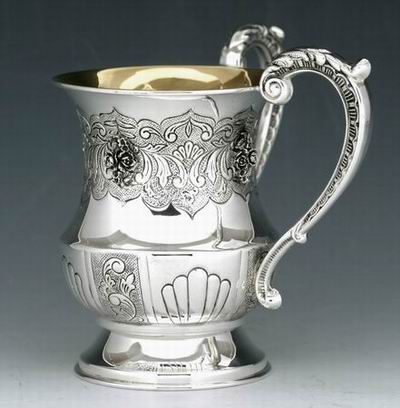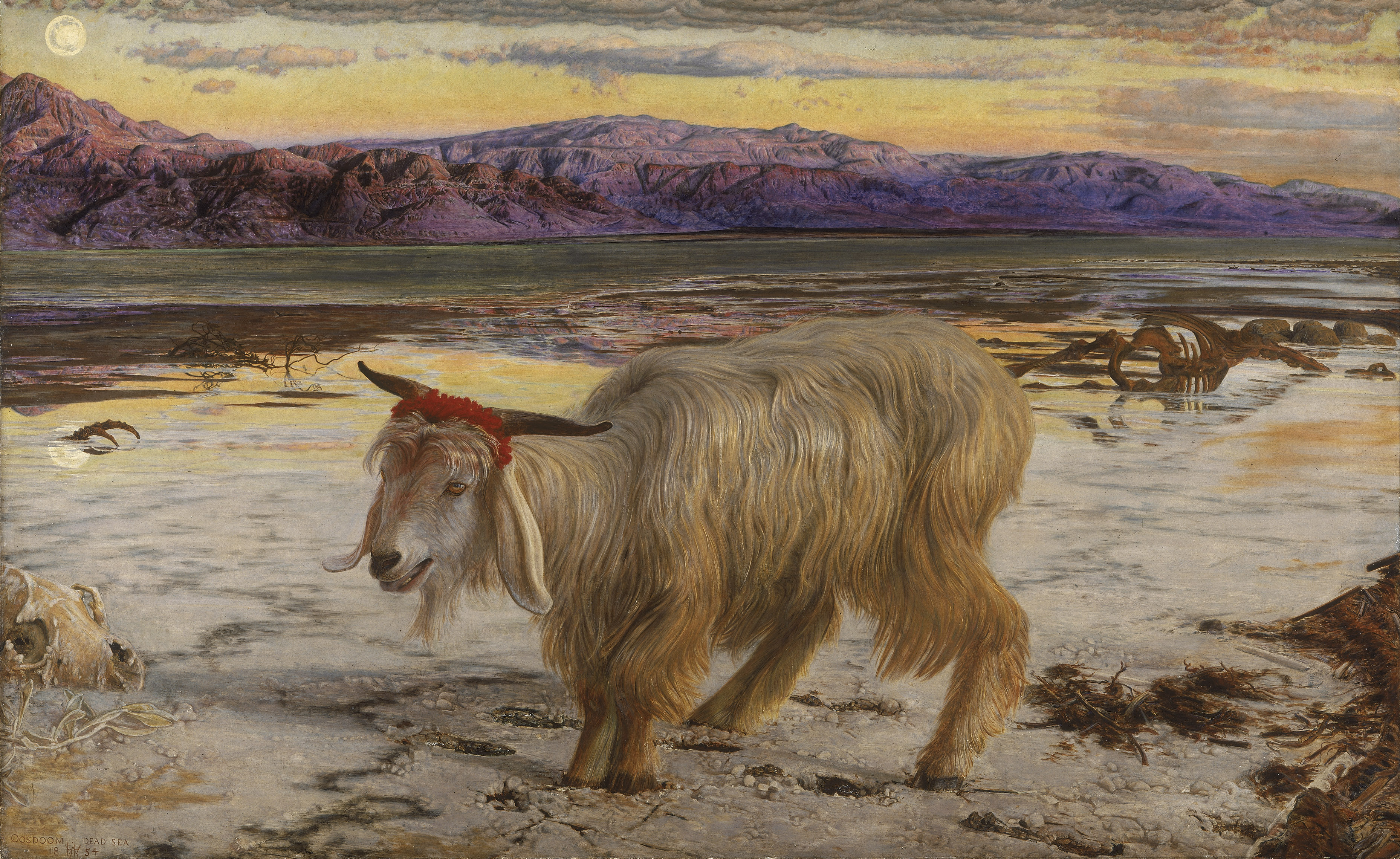|
Tashlikh
''Tashlikh'' ( he, "cast off") is a customary Jewish atonement ritual performed during the High Holy Days (Rosh Hashannah). Practice The ritual is performed at a large, natural body of flowing water (e.g., river, lake, sea, or ocean) on the afternoon of Rosh Hashanah, the Jewish New Year, although it may be performed until Hoshana Rabbah. The penitent recites a Biblical passage and, optionally, additional prayers. During the Tashlikh prayer, the worshipers symbolically throw their sins into a source of water. Some people throw small pieces of bread into the water, though many rabbis consider throwing bread into the water on Rosh Hashanah to be forbidden by halakha.Shurpin, Yehuda.The Problem With Feeding Fish at Tashlich. ''Chabad.org''. Chabad-Lubavitch Media Center. Retrieved August 29, 2020. Origin of the custom Scriptural source The name "''Tashlikh''" and the practice itself are derived from an allusion mentioned in the Biblical passage () recited at the ceremony: "You w ... [...More Info...] [...Related Items...] OR: [Wikipedia] [Google] [Baidu] |
Rosh Hashanah
Rosh HaShanah ( he, רֹאשׁ הַשָּׁנָה, , literally "head of the year") is the Jewish New Year. The biblical name for this holiday is Yom Teruah (, , lit. "day of shouting/blasting") It is the first of the Jewish High Holy Days (, , "Days of Awe"), as specified by Leviticus 23:23–25, that occur in the late summer/early autumn of the Northern Hemisphere. Rosh Hashanah begins a ten-day period of penitence culminating in Yom Kippur, as well as beginning the cycle of autumnal religious festivals running through Sukkot and ending in Shemini Atzeret. Rosh Hashanah is a two-day observance and celebration that begins on the first day of Tishrei, which is the seventh month of the ecclesiastical year. In contrast to the ecclesiastical lunar new year on the first day of the first month Nisan, the spring Passover month which marks Israel's exodus from Egypt, Rosh Hashanah marks the beginning of the civil year, according to the teachings of Judaism, and is the traditional ann ... [...More Info...] [...Related Items...] OR: [Wikipedia] [Google] [Baidu] |
Jewish Views On Sin
Judaism regards the violation of any of the 613 commandments as a sin. Judaism teaches that to sin is a part of life, since there is no perfect human and everyone has an inclination to do evil "from youth", though people are born sinless. Sin has many classifications and degrees. During the time of the Temple, Jewish courts punished certain sins with varying forms of punishment depending on the exact sin, as depicted in the Torah. These punishments vary from one of four forms of execution, to lashes, to fines, and everything in between. After the destruction of the second Temple and the Sanhedrin, physical punishments were no longer given due to the necessity of the Sanhedrin for their execution. Unintentional sins are considered less severe sins. Sins committed out of lack of knowledge are not considered sins. Sins between people are considered much more severe in Judaism than sins between man and God. Yom Kippur, the holiest day of repentance in Judaism, can atone for sins betw ... [...More Info...] [...Related Items...] OR: [Wikipedia] [Google] [Baidu] |
Minhag
''Minhag'' ( he, מנהג "custom", classical pl. מנהגות, modern pl. , ''minhagim'') is an accepted tradition or group of traditions in Judaism. A related concept, ''Nusach (Jewish custom), Nusach'' (), refers to the traditional order and form of the Jewish services, prayers. Etymology The Hebrew root N-H-G () means primarily "to drive" or, by extension, "to conduct (oneself)". The actual word ''minhag'' appears twice in the Hebrew Bible, both times in the same verse, and translated as "driving": Homiletically, one could argue that the use of the word ''minhag'' in Jewish law reflects its Biblical Hebrew origins as "the (manner of) driving (a chariot)". Whereas ''Halakha'' (law), from the word for walking-path, means the path or road set for the journey, ''minhag'' (custom), from the word for driving, means the manner people have developed themselves to travel down that path more quickly. The present use of ''minhag'' for custom may have been influenced by the Arabic ... [...More Info...] [...Related Items...] OR: [Wikipedia] [Google] [Baidu] |
Antiquities Of The Jews
''Antiquities of the Jews'' ( la, Antiquitates Iudaicae; el, Ἰουδαϊκὴ ἀρχαιολογία, ''Ioudaikē archaiologia'') is a 20-volume historiographical work, written in Greek, by historian Flavius Josephus in the 13th year of the reign of Roman emperor Flavius Domitian which was around AD 93 or 94.Freedman, David Noel, ed., ''The Anchor Bible Dictionary'', (New York: Doubleday, 1997, 1992). ''Antiquities of the Jews'' contains an account of the history of the Jewish people for Josephus' gentile patrons. In the first ten volumes, Josephus follows the events of the Hebrew Bible beginning with the creation of Adam and Eve. The second ten volumes continues the history of the Jewish people beyond the biblical text and up to the Jewish War, or the First Jewish–Roman War, 66 to 73 CE. This work, along with Josephus's other major work, ''The Jewish War'' (''De Bello Iudaico''), provides valuable background material for historians wishing to understand 1st-century AD Jud ... [...More Info...] [...Related Items...] OR: [Wikipedia] [Google] [Baidu] |
Abraham
Abraham, ; ar, , , name=, group= (originally Abram) is the common Hebrew patriarch of the Abrahamic religions, including Judaism, Christianity, and Islam. In Judaism, he is the founding father of the special relationship between the Jews and God; in Christianity, he is the spiritual progenitor of all believers, whether Jewish or non-Jewish; and in Islam, he is a link in the chain of Islamic prophets that begins with Adam (see Adam in Islam) and culminates in Muhammad. His life, told in the narrative of the Book of Genesis, revolves around the themes of posterity and land. Abraham is called by God to leave the house of his father Terah and settle in the land of Canaan, which God now promises to Abraham and his progeny. This promise is subsequently inherited by Isaac, Abraham's son by his wife Sarah, while Isaac's half-brother Ishmael is also promised that he will be the founder of a great nation. Abraham purchases a tomb (the Cave of the Patriarchs) at Hebron to be S ... [...More Info...] [...Related Items...] OR: [Wikipedia] [Google] [Baidu] |
Satan
Satan,, ; grc, ὁ σατανᾶς or , ; ar, شيطانالخَنَّاس , also known as Devil in Christianity, the Devil, and sometimes also called Lucifer in Christianity, is an non-physical entity, entity in the Abrahamic religions that seduces humans into sin or falsehood. In Judaism, Satan is seen as an agent subservient to God in Judaism, God, typically regarded as a metaphor for the ''yetzer hara'', or "evil inclination." In Christianity and Islam, he is usually seen as a fallen angel or jinn who has rebelled against God in Abrahamic religions, God, who nevertheless allows him temporary power over the fallen world and a host of demons. In the Quran, Shaitan, also known as Iblis, is an entity made of fire who was cast out of Heaven because he refused to bow before the newly created Adam in Islam, Adam and incites humans to sin by infecting their minds with ''waswās'' ("evil suggestions"). A figure known as ''ha-satan'' ("the satan") first appears in the Hebrew B ... [...More Info...] [...Related Items...] OR: [Wikipedia] [Google] [Baidu] |
Midrash
''Midrash'' (;"midrash" ''Random House Webster's Unabridged Dictionary''. he, מִדְרָשׁ; or מִדְרָשׁוֹת ''midrashot'') is expansive using a rabbinic mode of interpretation prominent in the . The word itself means "textual interpretation", "study", or " |
Binding Of Isaac
The Binding of Isaac ( he, , ), or simply "The Binding" (, ), is a story from Genesis 22 of the Hebrew Bible. In the biblical narrative, God tells Abraham to sacrifice his son, Isaac, on Moriah. As Abraham begins to comply, having bound Isaac to an altar, he is stopped by the Angel of the Lord; a ram appears and is slaughtered in Isaac's stead, as God commends Abraham's pious obedience. In addition to being addressed by modern scholarship, this biblical episode has been the focus of a great deal of commentary in traditional sources of Judaism, Christianity, and Islam. Biblical narrative According to the Hebrew Bible, God commands Abraham to offer his son Isaac as a sacrifice. After Isaac is bound to an altar, a messenger from God stops Abraham before the sacrifice finishes, saying "now I know you fear God". Abraham looks up and sees a ram and sacrifices it instead of Isaac. The passage states that the event occurred at "the mount of the " in "the land of Moriah". 2 Ch ... [...More Info...] [...Related Items...] OR: [Wikipedia] [Google] [Baidu] |
Worms, Germany
Worms () is a city in Rhineland-Palatinate, Germany, situated on the Upper Rhine about south-southwest of Frankfurt am Main. It had about 82,000 inhabitants . A pre-Roman foundation, Worms is one of the oldest cities in northern Europe. It was the capital of the Kingdom of the Burgundians in the early fifth century, hence is the scene of the medieval legends referring to this period, notably the first part of the ''Nibelungenlied''. Worms has been a Roman Catholic bishopric since at least 614, and was an important palatinate of Charlemagne. Worms Cathedral is one of the imperial cathedrals and among the finest examples of Romanesque architecture in Germany. Worms prospered in the High Middle Ages as an imperial free city. Among more than a hundred imperial diets held at Worms, the Diet of 1521 (commonly known as ''the'' Diet of Worms) ended with the Edict of Worms, in which Martin Luther was declared a heretic. Worms is also one of the historical ShUM-cities as a cultural ... [...More Info...] [...Related Items...] OR: [Wikipedia] [Google] [Baidu] |
Yaakov Ben Moshe Levi Moelin
Yaakov ben Moshe Levi Moelin ( he, יעקב בן משה מולין) (c. 1365 – September 14, 1427) was a Talmudist and ''posek'' (authority on Jewish law) best known for his codification of the customs (''minhagim'') of the German Jews. He is also known as Maharil ( he, מהריל) - the Hebrew acronym for "Our Teacher, the Rabbi, Yaakov Levi" - as well as ''Mahari Segal'' or ''Mahari Moelin''. Maharil's ''Minhagim'' was a source of law for Moses Isserles’ component of the ''Shulkhan Arukh''. Biography ''Maharil'' was the son and pupil of Moshe Levi Moelin, Rabbi of Mainz, and a pupil of R. Shalom b. Isaac ( he) of Wiener Neustadt. At a young age, Moelin was recognized as a budding scholar. In 1387, he succeeded his father as Rabbi of Mainz. He established a yeshiva in Mainz which attracted many students. One of his most noteworthy students was Jacob Weil. Moelin lived through the mass slaughter of Jews in Austria in 1420 and the Hussite Wars in 1421, which brought su ... [...More Info...] [...Related Items...] OR: [Wikipedia] [Google] [Baidu] |
Ritual Washing In Judaism
In Judaism, ritual washing, or ablution, takes two main forms. ''Tevilah'' (טְבִילָה) is a full body immersion in a mikveh, and ''netilat yadayim'' is the washing of the hands with a cup (see Handwashing in Judaism). References to ritual washing are found in the Hebrew Bible, and are elaborated in the Mishnah and Talmud. They have been codified in various codes of Jewish law and tradition, such as Maimonides' ''Mishneh Torah'' (12th century) and Joseph Karo's ''Shulchan Aruch'' (16th century). These practices are most commonly observed within Orthodox Judaism. In Conservative Judaism, the practices are normative, with certain leniencies and exceptions. Ritual washing is not generally performed in Reform Judaism. Hebrew Bible The Hebrew Bible requires immersion of the body in water as a means of purification in several circumstances, for example: : And when the '' zav'' is cleansed of his issue, then he shall number to himself seven days for his cleansing, and wash hi ... [...More Info...] [...Related Items...] OR: [Wikipedia] [Google] [Baidu] |
Scapegoat
In the Bible, a scapegoat is one of a pair of kid goats that is released into the wilderness, taking with it all sins and impurities, while the other is sacrificed. The concept first appears in the Book of Leviticus, in which a goat is designated to be cast into the desert to carry away the sins of the community. Practices with some similarities to the scapegoat ritual also appear in Ancient Greece and Ebla. Origins Some scholars have argued that the scapegoat ritual can be traced back to Ebla around 2400 BC, from where it spread throughout the ancient Near East. Etymology The word "scapegoat" is an English translation of the Hebrew ( he, עזאזל), which occurs in Leviticus 16:8: The Brown–Driver–Briggs Hebrew Lexicon gives () as a reduplicative intensive of the stem , "remove", hence , "for entire removal". This reading is supported by the Greek Old Testament translation as "the sender away (of sins)". The lexicographer Gesenius takes to mean "averter", wh ... [...More Info...] [...Related Items...] OR: [Wikipedia] [Google] [Baidu] |


.jpg)


.jpg)


